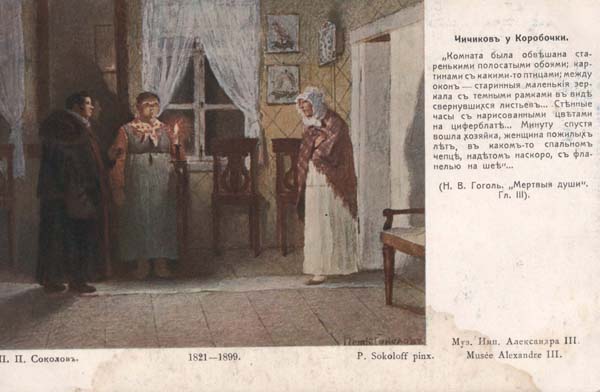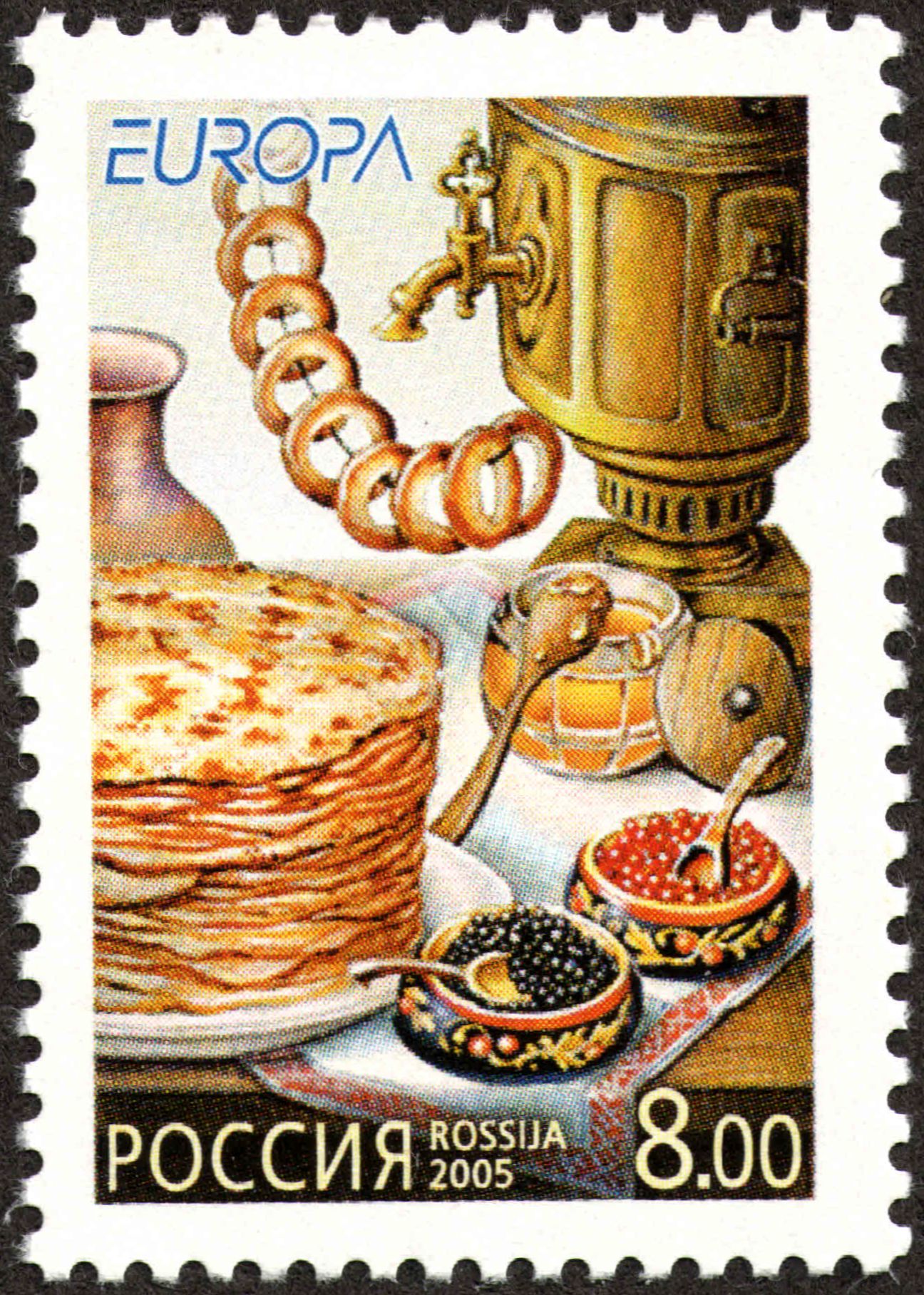|
Rasstegai
Rasstegai () is a type of Russian pirog with a hole in the top. History and etymology The dish was very popular in Tsarist Russia. In rasstegai the filling is not hidden in dough, and in Russian means "unfastened" pies. Another version: in Moscow, in the gypsy choir, the beautiful Katya sang very well the Russian song "Sarafanchik-rasstegaychik"; in honor of Katya, rasstegai became very popular meal in taverns in Moscow. Fillings The filling usually contains fish, but may also contain meat, liver, rice or mushrooms. The hole of rasstegai is used to add broth to the stuffing. In literature The dish is mentioned in Nikolai Gogol's ''Dead Souls'' and Vladimir Gilyarovsky Vladimir Alekseyevich Gilyarovsky (; 26 November 1853 – 1 October 1935), was a Russian writer and newspaper journalist, best known for his reminiscences of life in pre-Revolutionary Moscow (''Moscow and Muscovites''), which he first published i ...'s ''Moscow and the Muscovites''.Леонид Зданови ... [...More Info...] [...Related Items...] OR: [Wikipedia] [Google] [Baidu] |
Pirog
Pirog ( rus, пиро́г, p=pʲɪˈrok, a=Ru-пирог.ogg, links=yes; , , ; ; ; , ; , ; ; ) is a baked case of dough with either sweet or savory filling.Darra Goldstein. ''A Taste of Russia: A Cookbook of Russian Hospitality'', "Russian pies", p.54. Russian Information Service, 1999, Вильям Похлебкин. ''Кулинарный словарь''Пироги Москва: Центрполиграф, 2007, ( William Pokhlyobkin. ''The Culinary Dictionary'', "Pirogi". Moscow: Centrpoligraph, 2007; in Russian) The dish is common in Eastern European cuisines. The name is derived from the ancient Proto-Slavic word ''pir'', meaning "banquet" or " festivity".Вильям Похлебкин. ''Большая энциклопедия кулинарного искусства''Пироги русские Москва: Центрполиграф, 2010, ( William Pokhlyobkin. ''The Great Encyclopedia of Culinary Art'', "Russian pirogi". Moscow: Centrpoligraph, 2010; in ... [...More Info...] [...Related Items...] OR: [Wikipedia] [Google] [Baidu] |
Russia
Russia, or the Russian Federation, is a country spanning Eastern Europe and North Asia. It is the list of countries and dependencies by area, largest country in the world, and extends across Time in Russia, eleven time zones, sharing Borders of Russia, land borders with fourteen countries. Russia is the List of European countries by population, most populous country in Europe and the List of countries and dependencies by population, ninth-most populous country in the world. It is a Urbanization by sovereign state, highly urbanised country, with sixteen of its urban areas having more than 1 million inhabitants. Moscow, the List of metropolitan areas in Europe, most populous metropolitan area in Europe, is the capital and List of cities and towns in Russia by population, largest city of Russia, while Saint Petersburg is its second-largest city and Society and culture in Saint Petersburg, cultural centre. Human settlement on the territory of modern Russia dates back to the ... [...More Info...] [...Related Items...] OR: [Wikipedia] [Google] [Baidu] |
Sarafan
A sarafan ( rus, сарафа́н, p=sərɐˈfan, from ''sarāpā'', literally "romhead to feet") is a long, trapezoidal Russian dress worn by girls and women and forming part of Russian traditional folk costume. Traditional Russian costume consists of straight, flowing lines. Beginning at the turn of the 18th century, the sarafan became the most popular article of peasant women's clothing in the Northern and Central regions of Russia. Sarafans were regularly worn until well into the 20th century, having first been mentioned in chronicles dating back to the year 1376. The origin of the term Sarafan lies in Persia, but the structure of the sarafan was inspired by Viking women clothing. Old Russia cultivated especially during the era of Grand Principality of Moscow strong ties to Western Asia and Southwest Asia and served also as an intermediary in the trade between European countries like Sweden, and Asian countries like Persia, and what is today Turkey. The sarafan most like ... [...More Info...] [...Related Items...] OR: [Wikipedia] [Google] [Baidu] |
Nikolai Gogol
Nikolai Vasilyevich Gogol; ; (; () was a Russian novelist, short story writer, and playwright of Ukrainian origin. Gogol used the Grotesque#In literature, grotesque in his writings, for example, in his works "The Nose (Gogol short story), The Nose", "Viy (story), Viy", "The Overcoat", and "Nevsky Prospekt (story), Nevsky Prospekt". These stories, and others such as "Diary of a Madman (Nikolai Gogol), Diary of a Madman", have also been noted for their Proto-Surrealism, proto-surrealist qualities. According to Viktor Shklovsky, Gogol used the technique of defamiliarization when a writer presents common things in an unfamiliar or strange way so that the reader can gain new perspectives and see the world differently. His early works, such as ''Evenings on a Farm Near Dikanka'', were influenced by his Ukrainian upbringing, Ukrainian culture and Ukrainian folklore, folklore. His later writing satirised political corruption in contemporary Russian Empire, Russia (''The Government I ... [...More Info...] [...Related Items...] OR: [Wikipedia] [Google] [Baidu] |
Dead Souls
''Dead Souls'' ( , pre-reform spelling: ) is a novel by Nikolai Gogol, first published in 1842, and widely regarded as an exemplar of 19th-century Russian literature. The novel chronicles the travels and adventures of Pavel Ivanovich Chichikov and the people whom he encounters. These people typify the Russian middle aristocracy of the time. Gogol himself saw his work as an "epic poem in prose", and within the book characterised it as a "poem in prose". Gogol intended the novel to be the first part of a three-volume work, but burned the manuscript of the second part shortly before his death. Modern editions of ''Dead Souls'' include what survives from Part Two, as reconstructed by editors from Gogol's notebooks. Although the novel ends in mid-sentence (like Sterne's ''Sentimental Journey''), it is regarded by some as complete in the extant form. Characterization The original title, as shown on the illustration (cover page), was "The Wanderings of Chichikov, or Dead Souls. ''Po ... [...More Info...] [...Related Items...] OR: [Wikipedia] [Google] [Baidu] |
Vladimir Gilyarovsky
Vladimir Alekseyevich Gilyarovsky (; 26 November 1853 – 1 October 1935), was a Russian writer and newspaper journalist, best known for his reminiscences of life in pre-Revolutionary Moscow (''Moscow and Muscovites''), which he first published in a book form in 1926. Biography He was born on 26 November 1855 (according to church records, 1853 according to his own writings) on a manor near Vologda where his father, a Novgorodian, worked as an assistant to the manor's bailiff, a Zaporozhian Cossack whose daughter he later married. Gilyarovsky treasured his partly Cossack descent: as a young man, he allegedly posed for one of the Cossacks depicted on Ilya Repin's huge canvas '' Reply of the Zaporozhian Cossacks''; he was also a model for Taras Bulba, whose figure is part of the Gogol Monument in Moscow. Repin was a lifelong friend, with whom Gilyarovsky often corresponded in Ukrainian. Raised by his well-educated mother (who died when he was 8) and his aristocratic stepmother, he ... [...More Info...] [...Related Items...] OR: [Wikipedia] [Google] [Baidu] |
Russian Cuisine
Russian cuisine is a collection of the different dishes and cooking traditions of the Russians, Russian people as well as a list of culinary products popular in Russia, with most names being known since pre-Soviet times, coming from all kinds of social circles. History The history of Russian cuisine was divided in four groups: Old Russian cuisine (9th to 16th century), Old Moscow cuisine (17th century), the cuisine that existed during the ruling of Peter the Great, Peter and Catherine the Great (18th century), and finally Petersburg cuisine, which took place from the end of the 18th century to the 1860s. In the Old Russian period, the main food groups were bread, grains, and other foods that contained starch. Women baked pies with many different fillings, such as mushrooms or berries. During gatherings, a loaf of bread and salt was always present. Kasha, such as buckwheat and oats, were represented as wellbeing to the household. Many Russians used honey and berries and mad ... [...More Info...] [...Related Items...] OR: [Wikipedia] [Google] [Baidu] |


